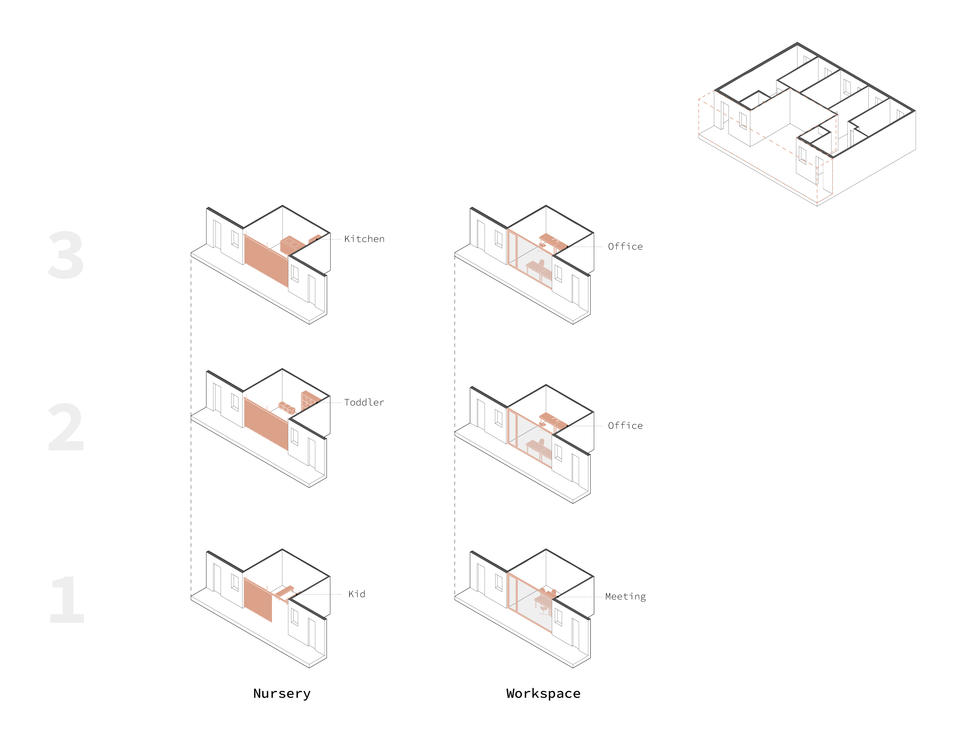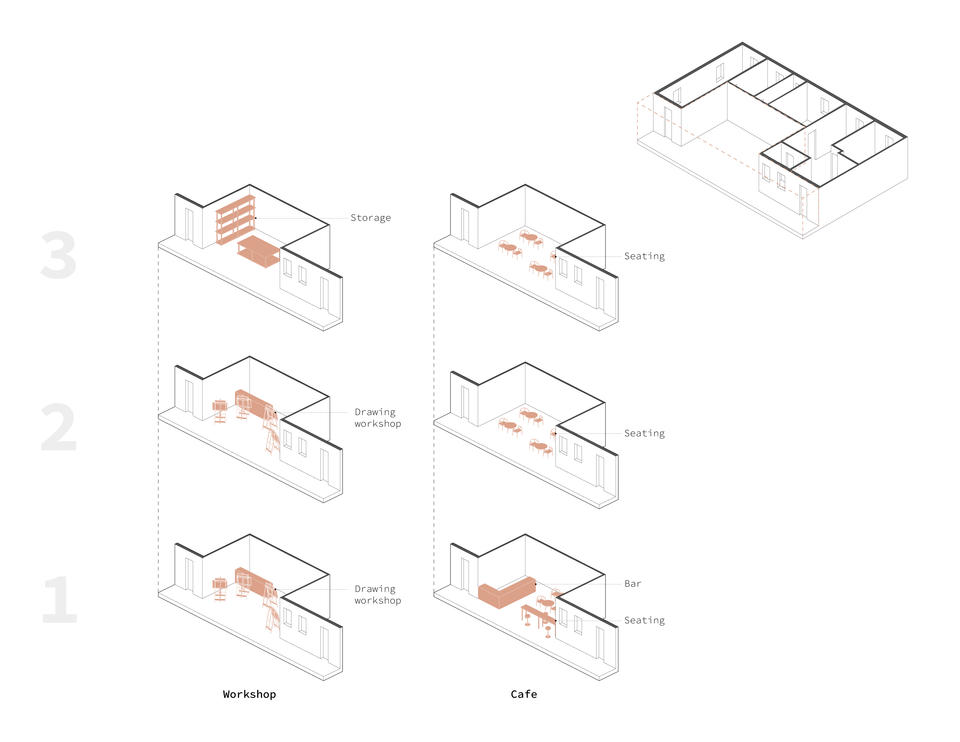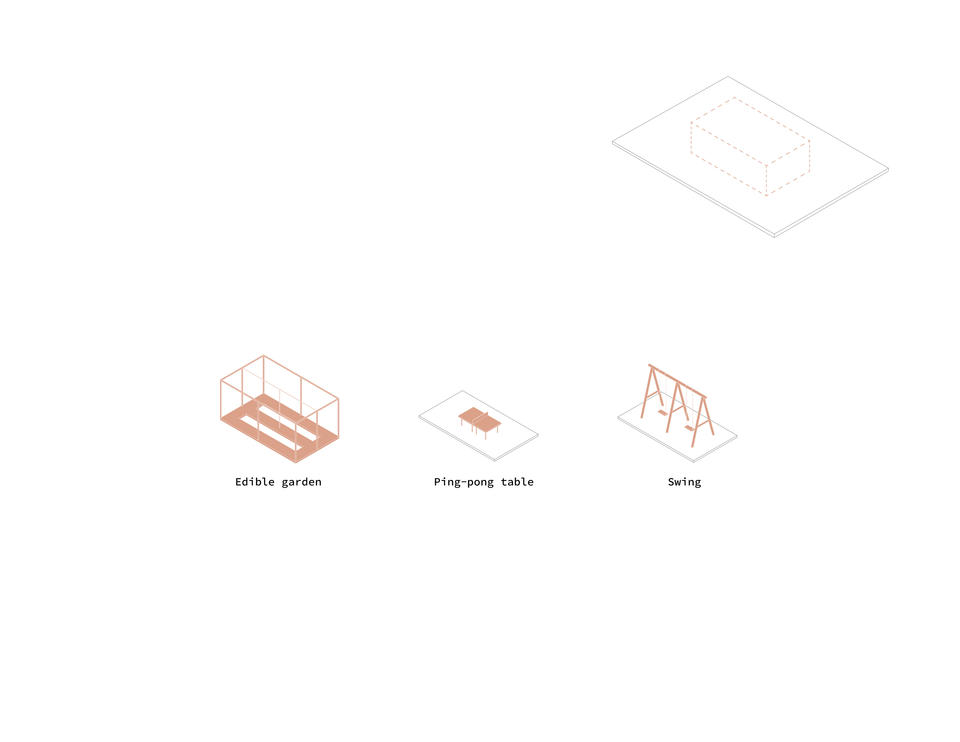Guangyi Niu
Reinforcing Connection Within Collective Housing:
A new vision of Red Steel City
ABSTRACT
Red Steel City is a historical residential complex built 64 year ago for the first workers of the Iron & Steel Complex in Wuhan, China, under the help design guidance of the former Soviet Union. Equipped with educational and medical facilities, this “City” nearly meets every need of the residents. Where residents worked boosted the development of steel, which is considered a prerequisite for industrialization, and where they lived became the template for the era when China was finding its footing in its incredible drive to industrialization.
The original plan of Red Steel City did not consider practical conditions like varying family structures and the oversized courtyard space, which could be interpreted as a waste in a high-density city. The old workers have moved away, and it is proposed to be young professionals housing. Due to the shifting of users, sensitive intervention is needed to meet new demands. By proposing modular plug-in building units that better accommodate changing user needs, in addition to the separated buildings operating as loops to complete the enclosure of the courtyards and the modification of residential units to a proper scale, living spaces for various sized families are created, playground toolkits are also presented in the courtyards to activate this community. The new skin added to the existing facade offers alternative circulation and different scale shared space for residents, while the old facade surfaces become flexible walls.
The intervention informs an organic system for collective living, the connections are made both physically and mentally, which would trigger spontaneous contributions by residents.
Image
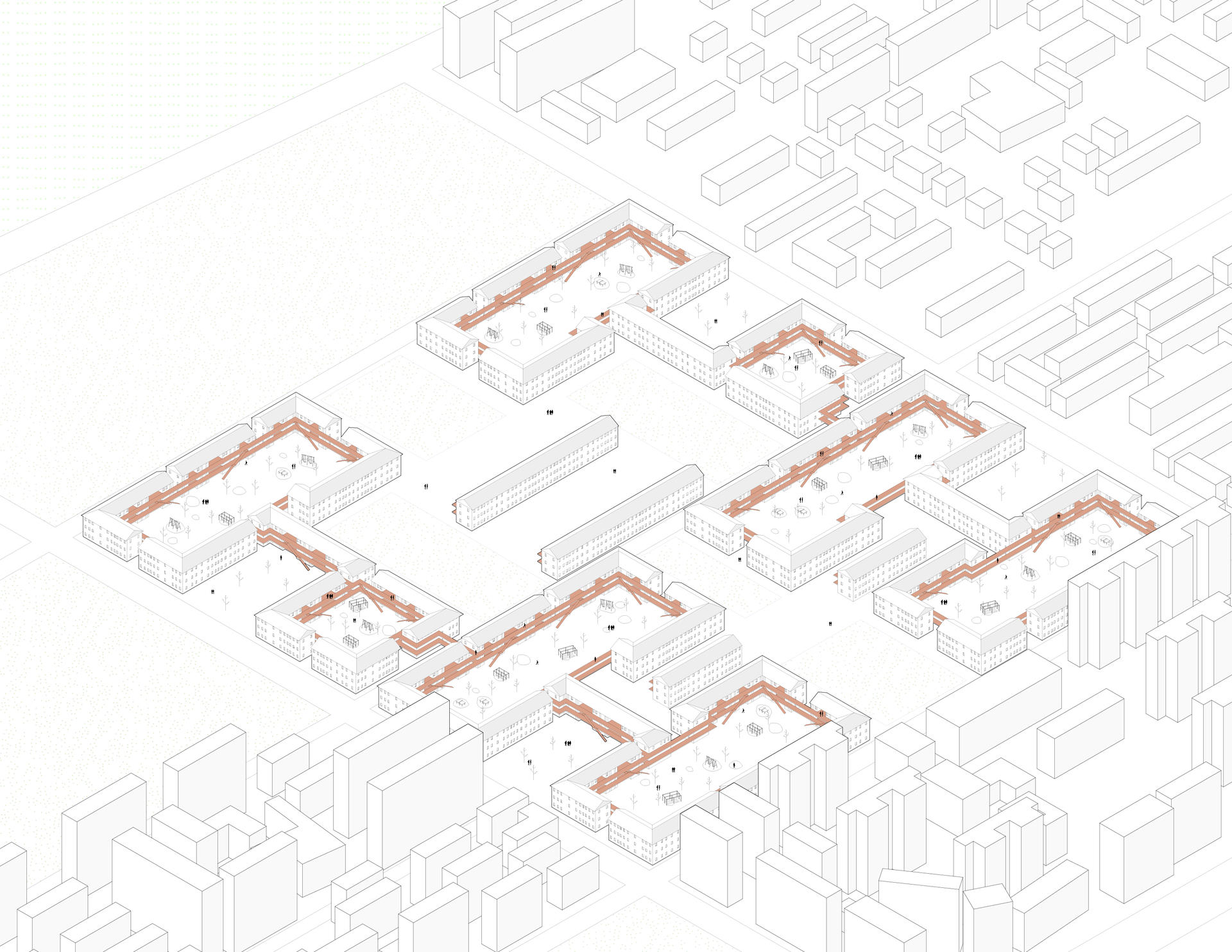
Background
New China was founded in 1949, and the “First Five-Year Plan” was launched in 1953. With the signing of the “Sino-Soviet Friendship, Alliance and Mutual Assistance Treaty”, China learned a lot from the Soviet Union in many aspects during this period. Various projects were distributed in the Northeast, Southwest, Central China and South China.
As the development of steel was considered a prerequisite for industrialization. Large-scale projects such as Wuhan Iron & Steel Complex, Anshan Iron & Steel Complex and Benxi Iron & Steel Complex’s renovation and expansion were launched.
The people’s public facilities that the Soviet Union included compromise a large number of houses, schools and hospitals. Red Steel City, a residential area where workers working in Wuhan Iron & Steel Complex live, is also a project of this special age as one of the projects in Wuhan.
As Red Steel City's layout is copied directly from the Soviet Union, it adopts a unified style in terms of architectural form, and the highly categorized residential communities arranged in a standardized paradigm were evenly distributed to workers.
The overall structure of the “Red Steel City” is based on the layout of the “囍” (happiness) building, which is more regular in terms of plan layout and prefers central axis symmetry. There are corresponding supporting facilities in the surrounding area, such as schools, commercial streets, movie theaters, etc. The original courtyard adopts the form of “co-yard” residential courtyard space, which is warm and safe.
Under the current construction plan most local residents have moved away, most of the buildings will be torn down and a small part of it would remain as industrial heritage site.
Image
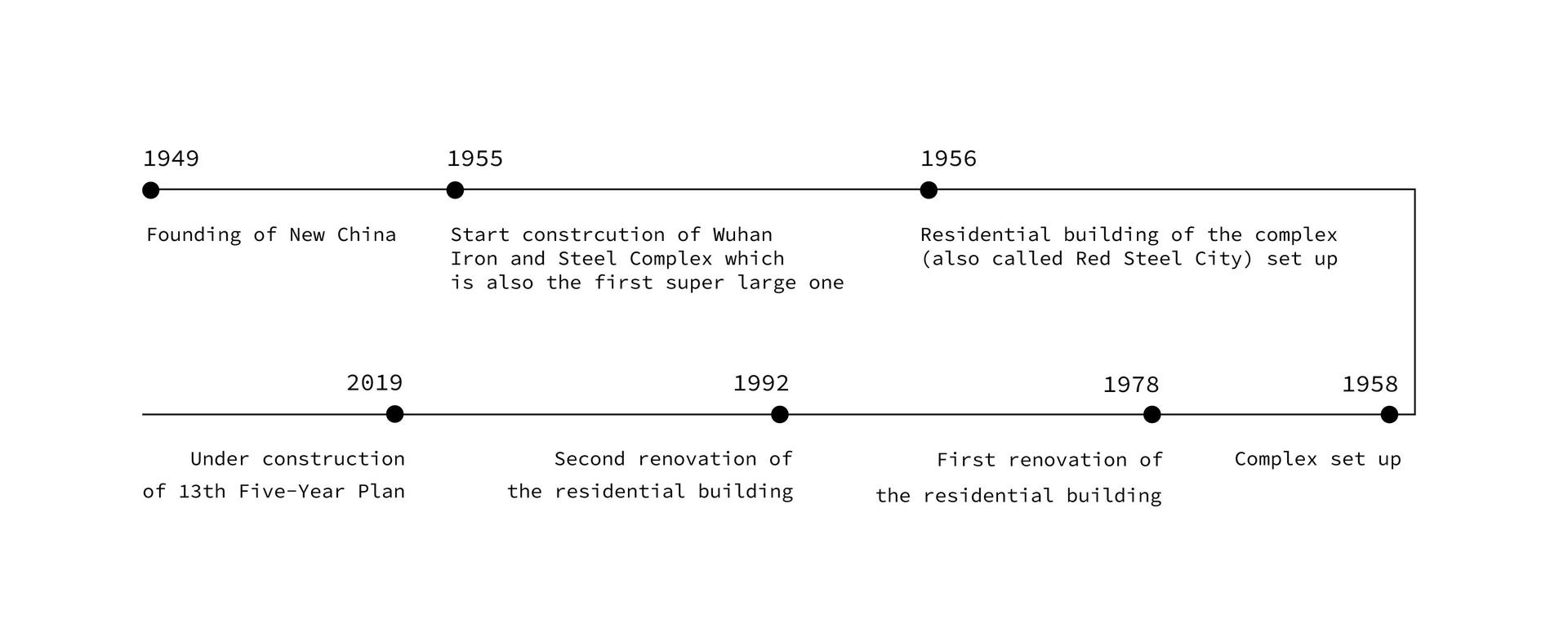
▲ Timeline
Image

▲ Location
SITE DOCUMENTATION
Image
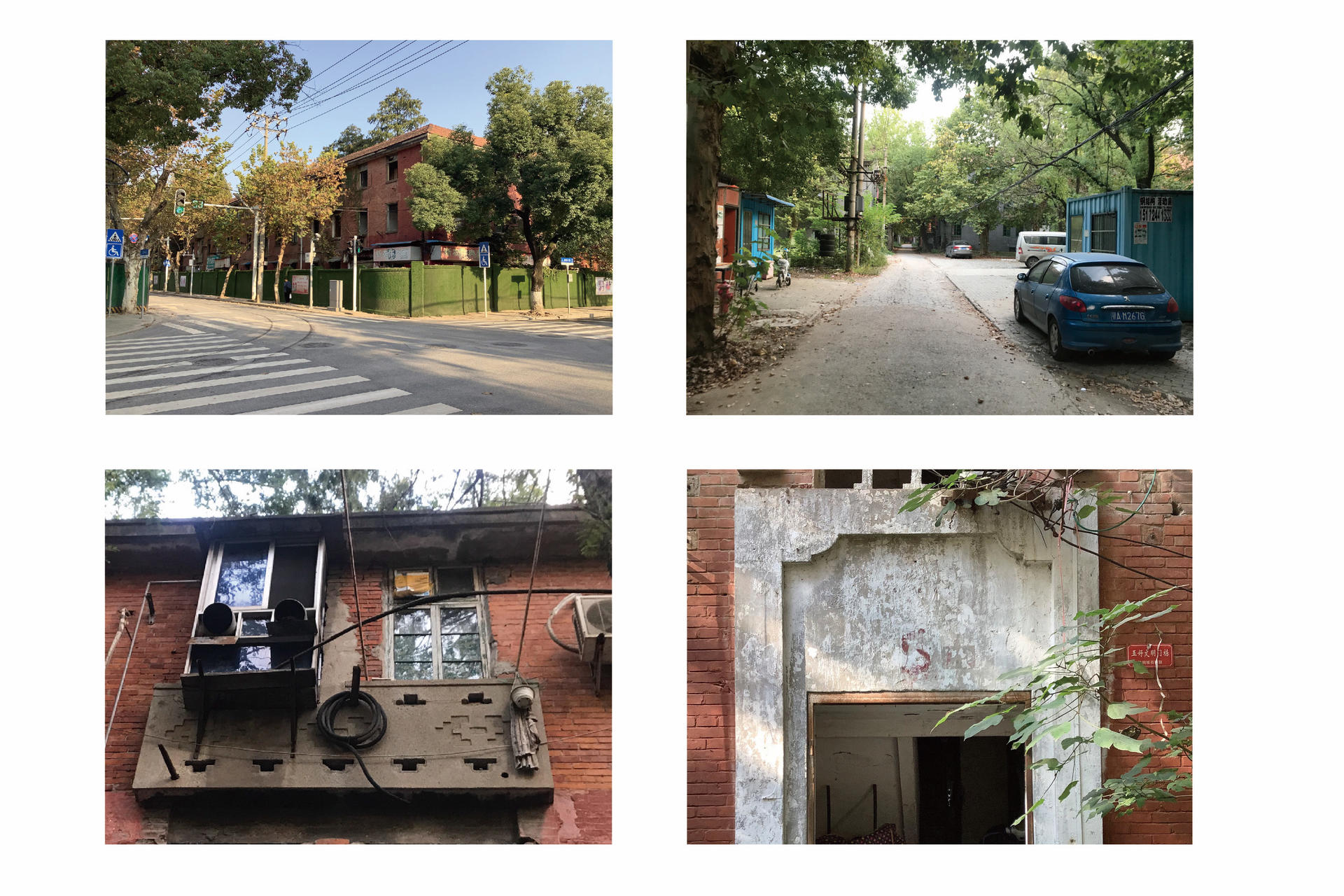
▲ From upper left to bottom right are: northwest street corner facade, courtyard view and elevation details.
Image
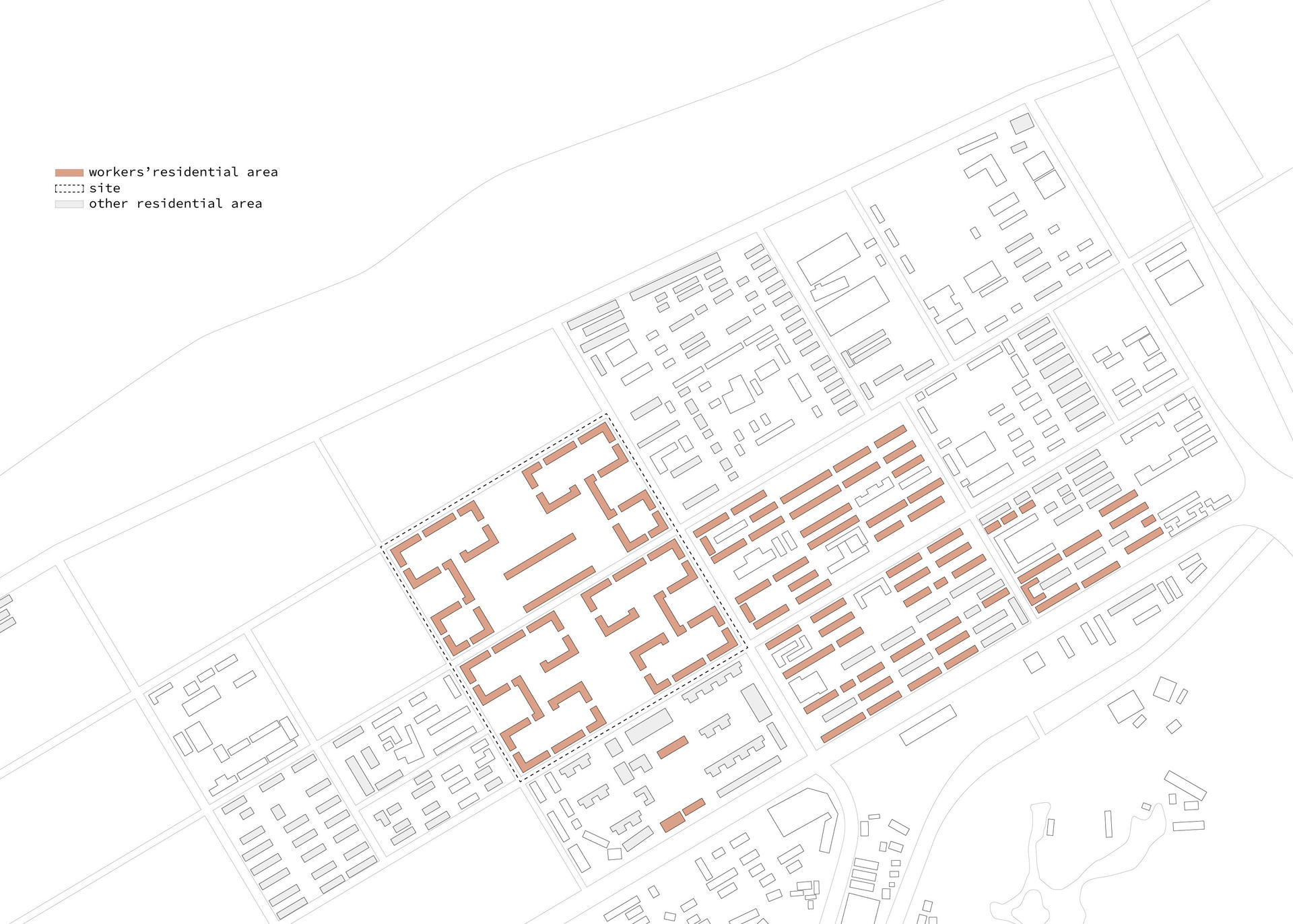
▲ Types of residential area
Image
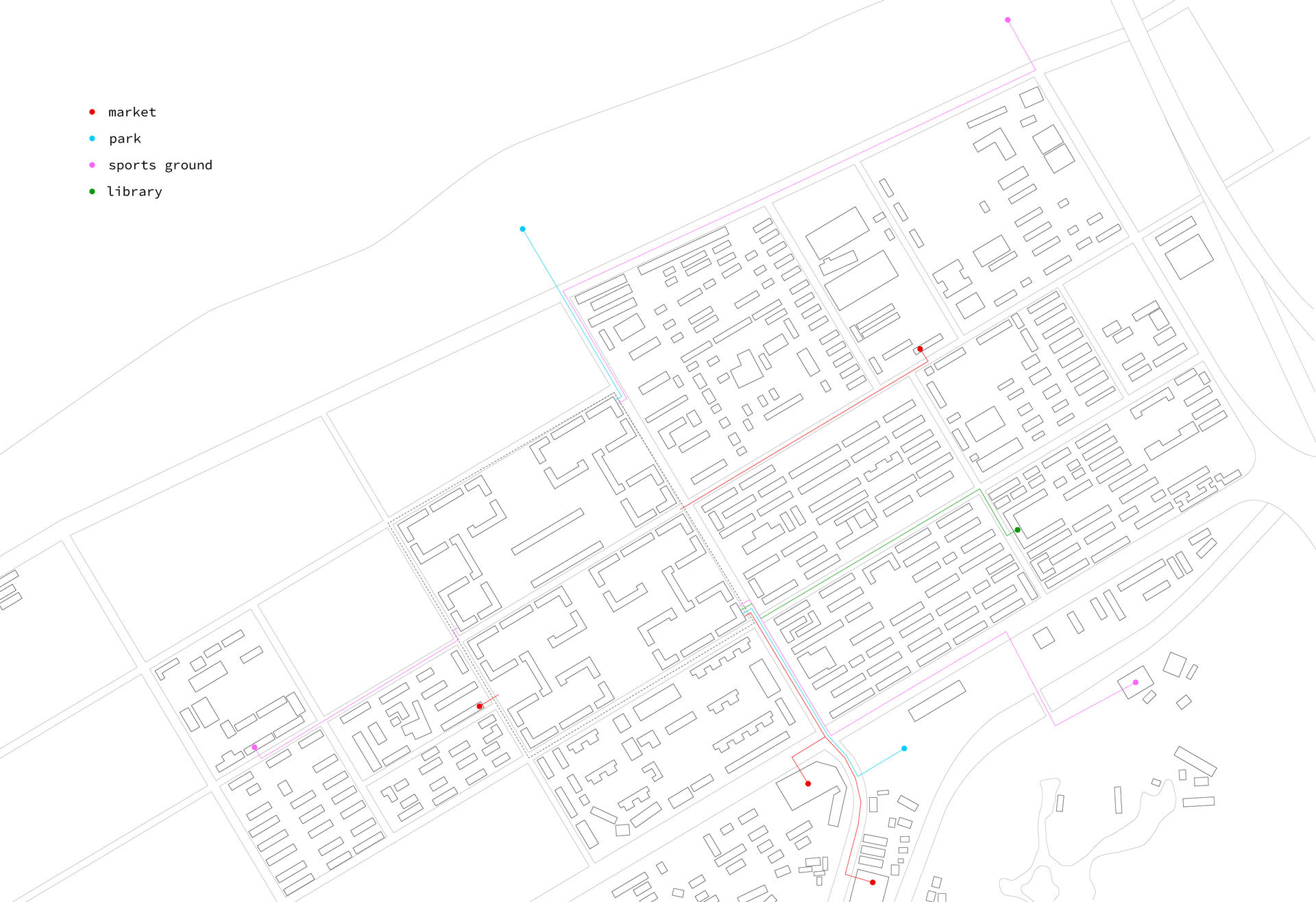
▲ Programs involved in users' daily routines
Image
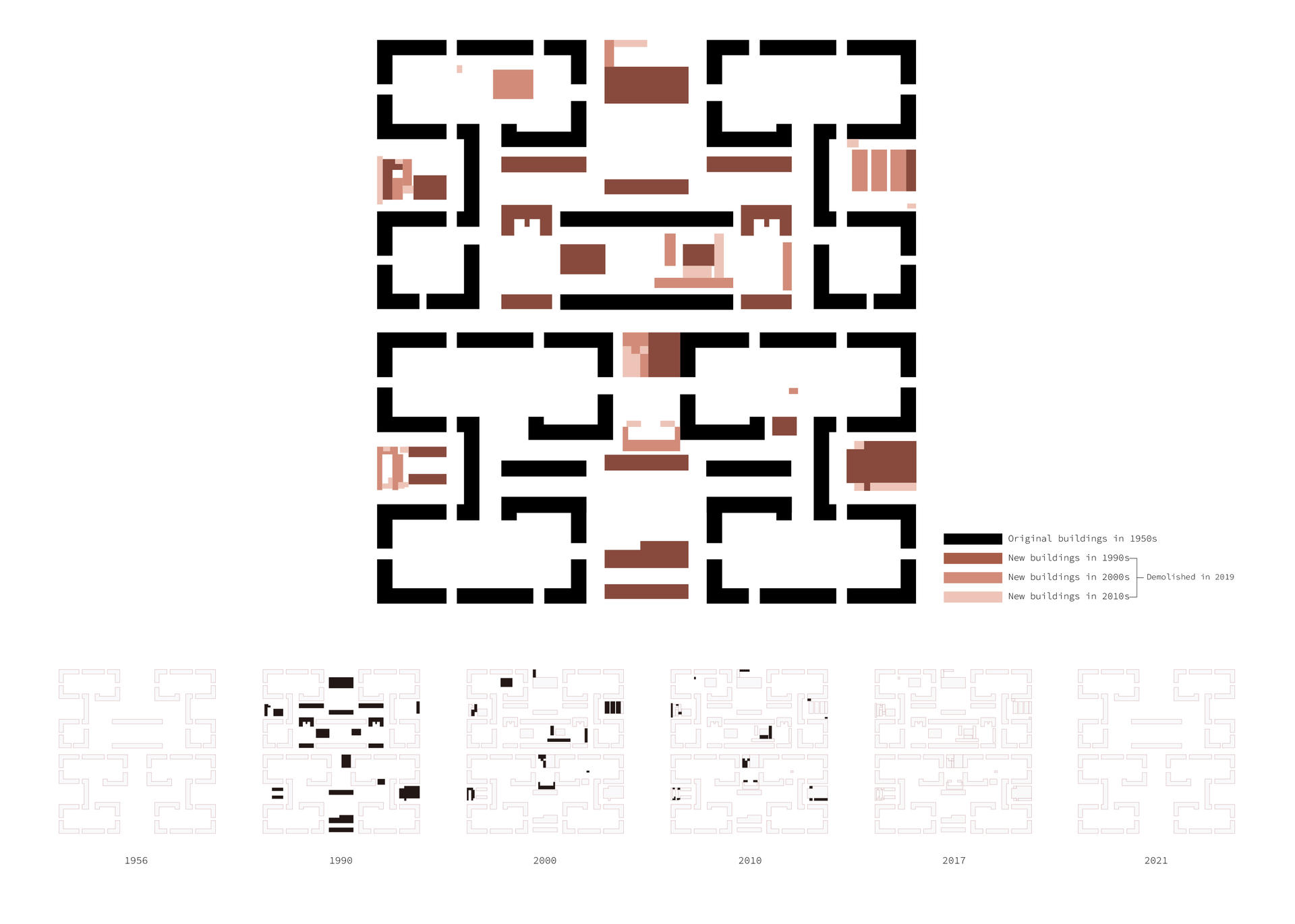
▲ Layout before 2019
Image
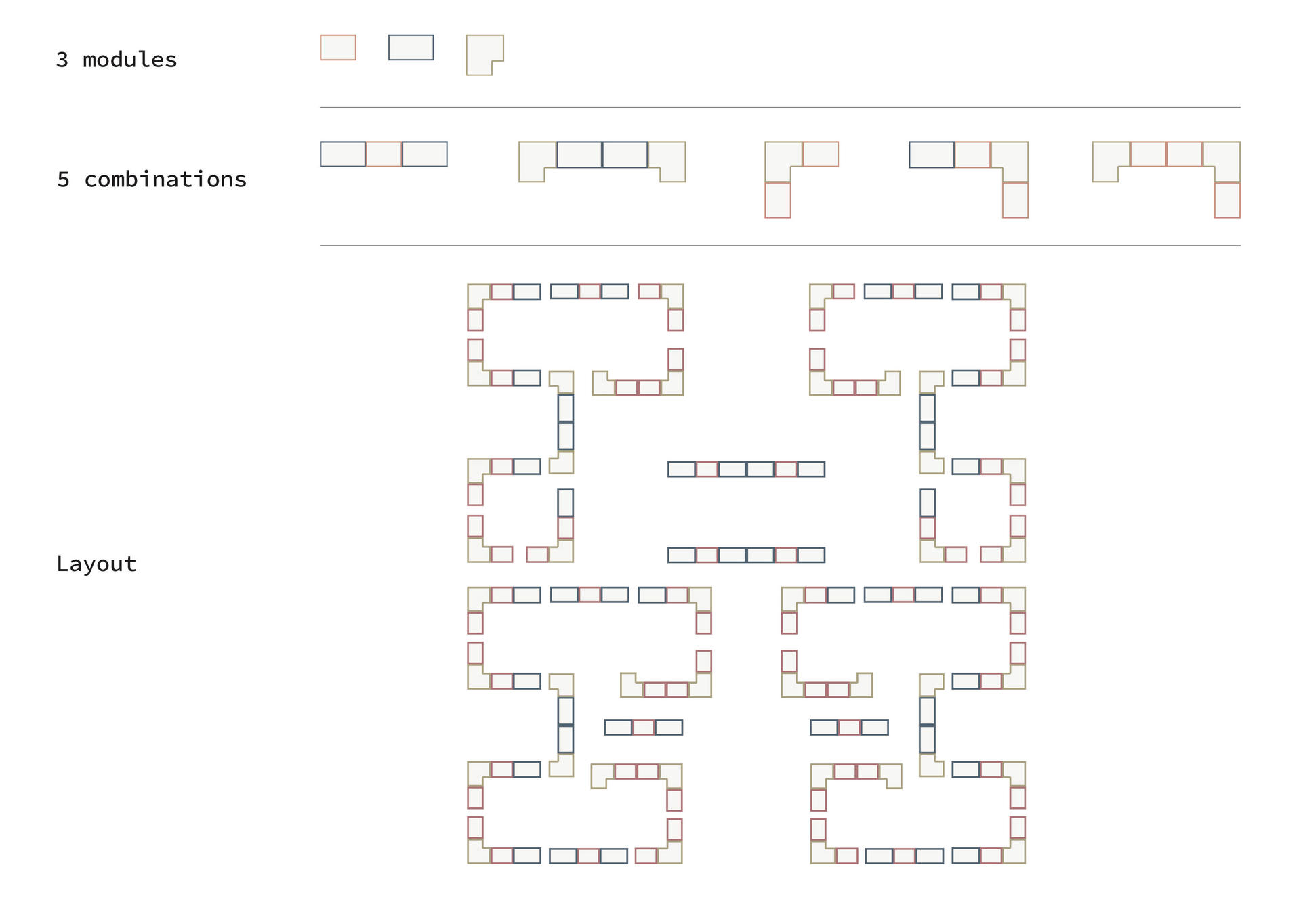
▲ Module
SHIFTING OF USERS
Image

▲ Old vs. new users
Image
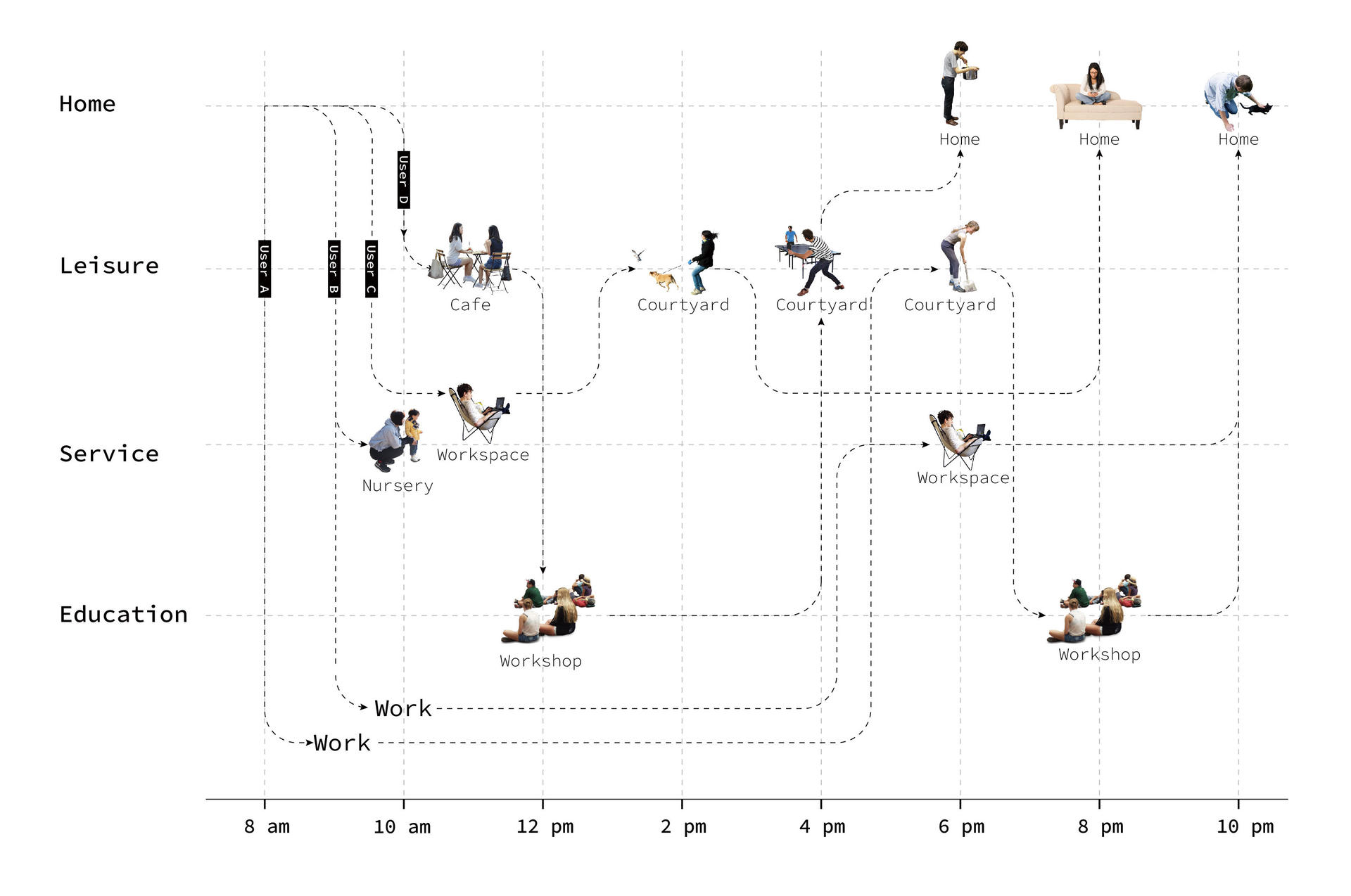
▲ Lifestyle of new users
RESOLUTION
Image
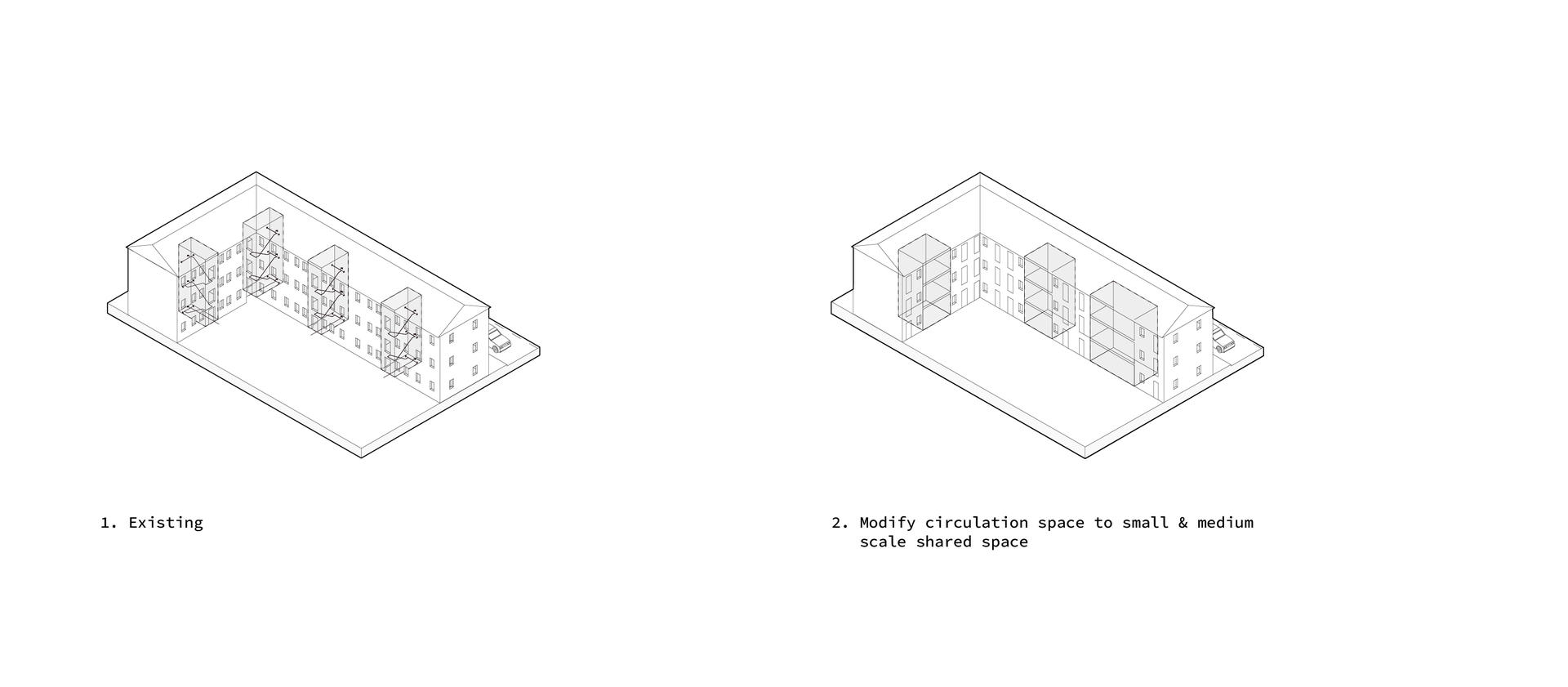
Image
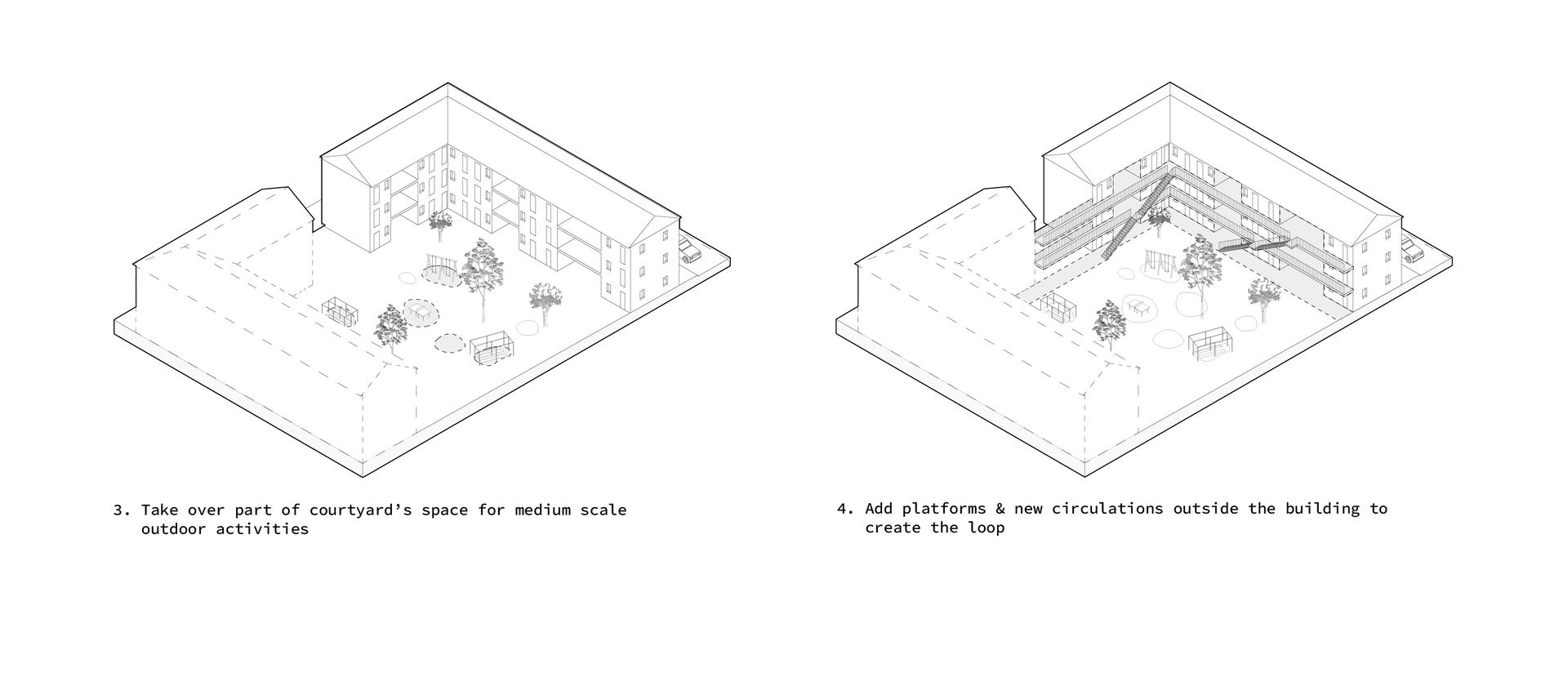
Image
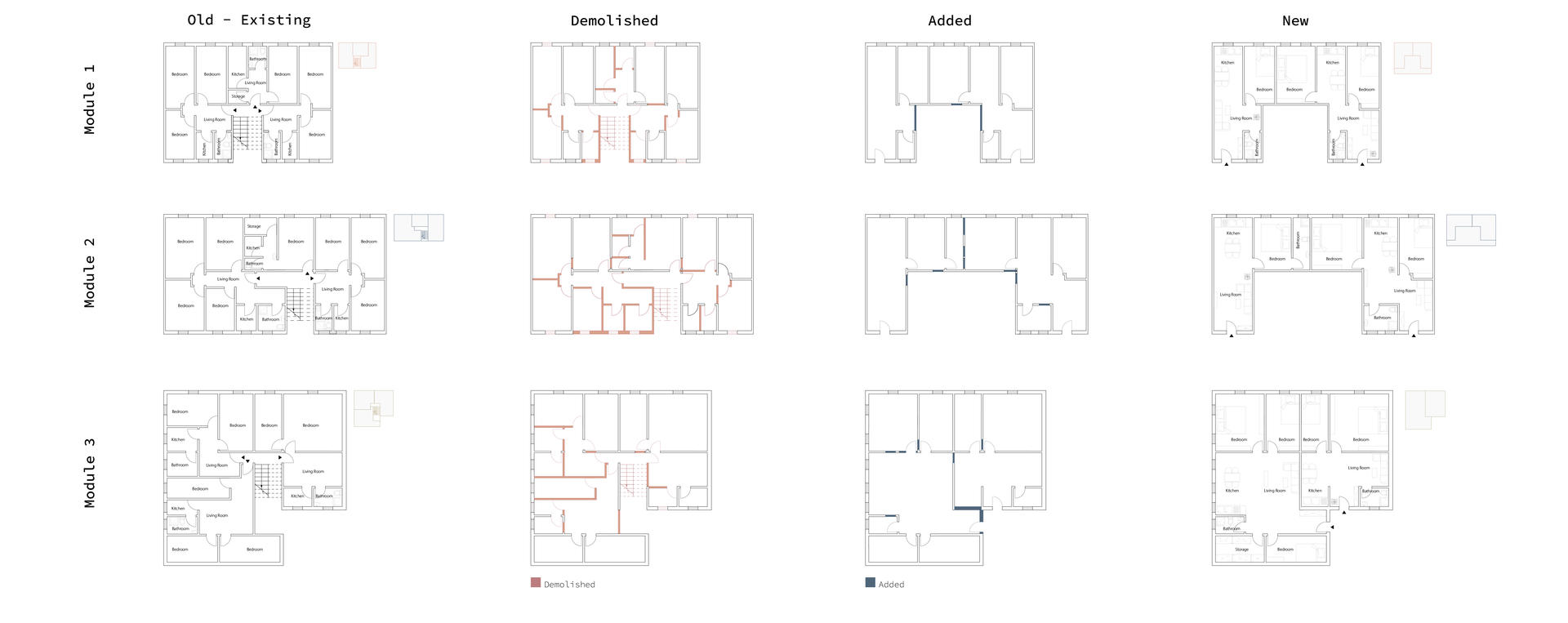
Image
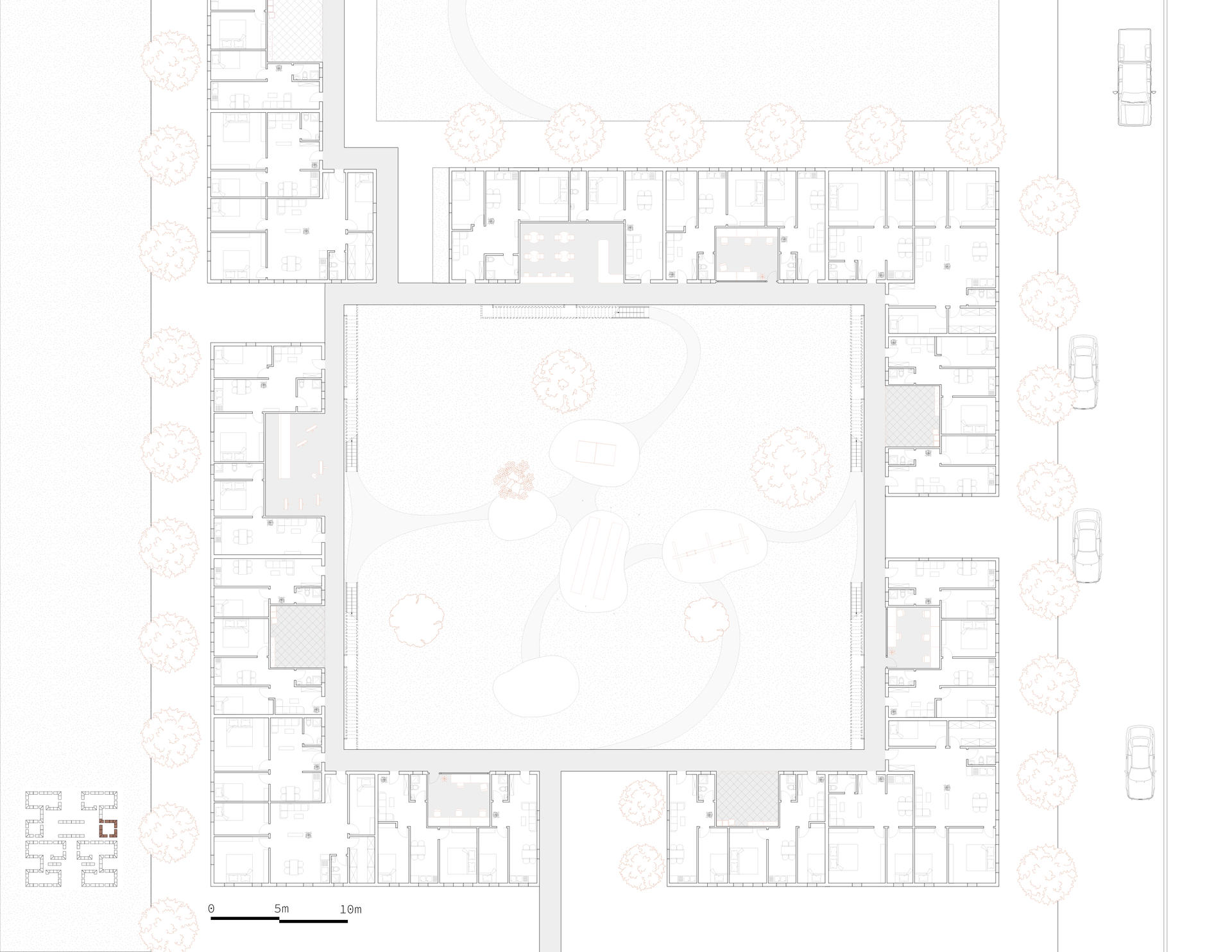
Image
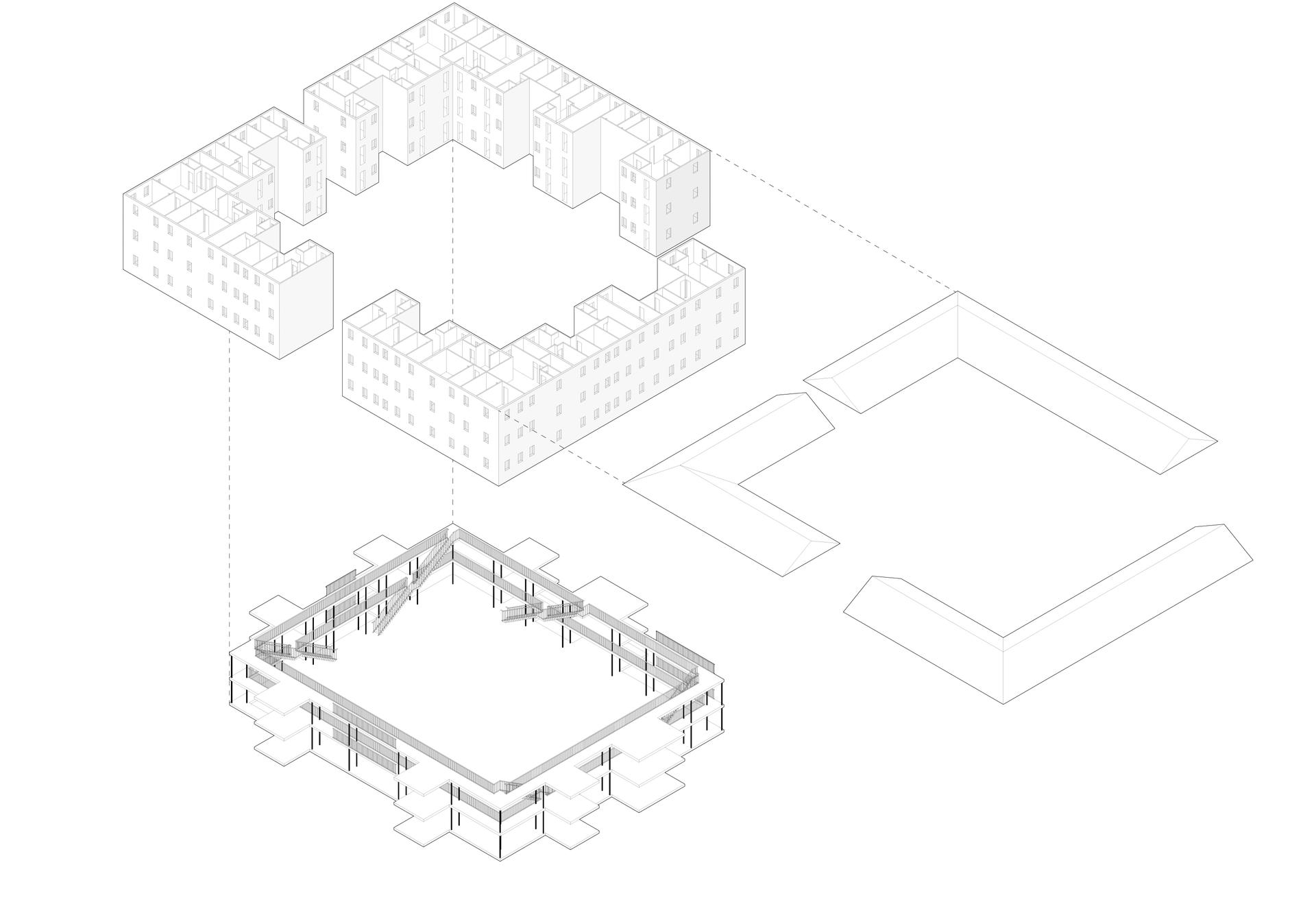
Image
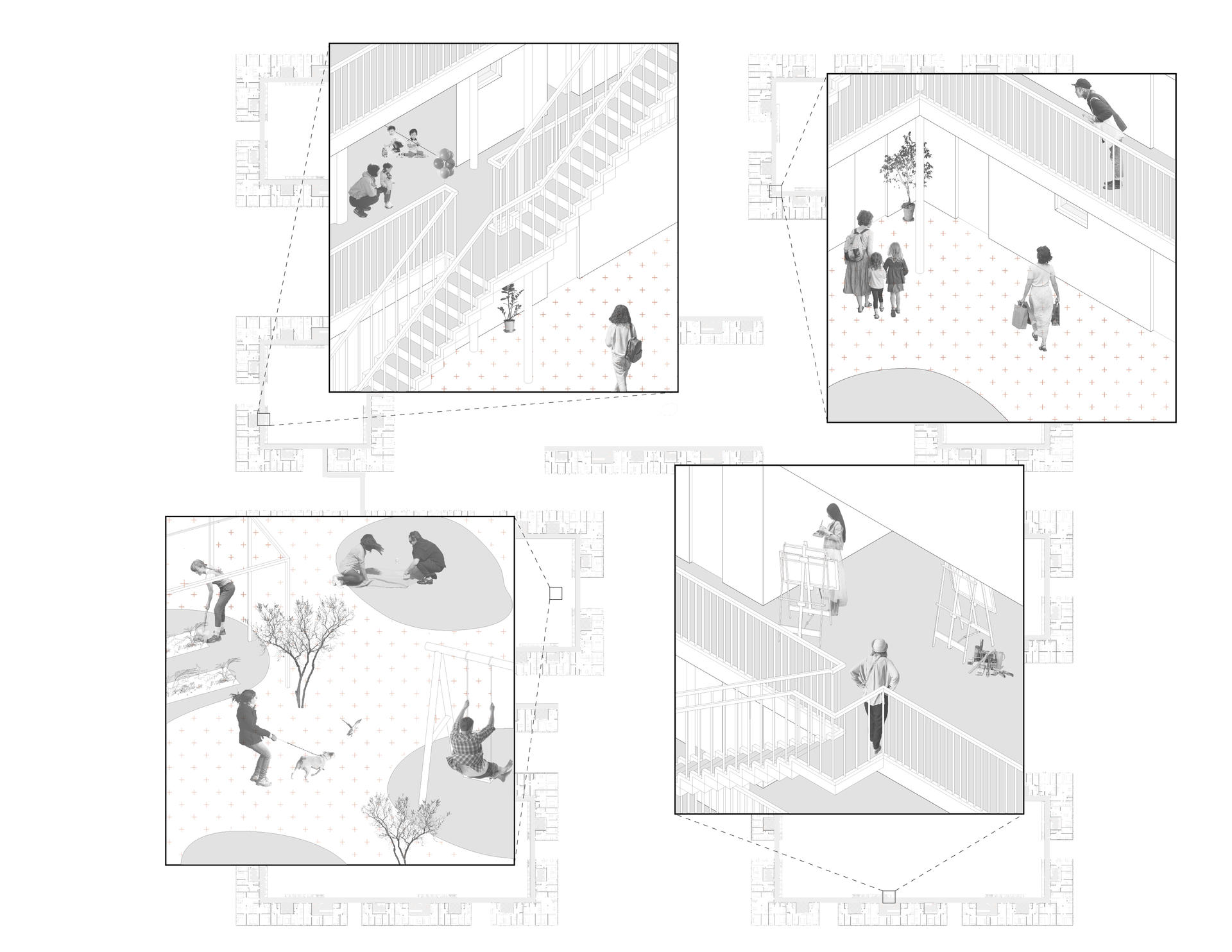
Image

Image
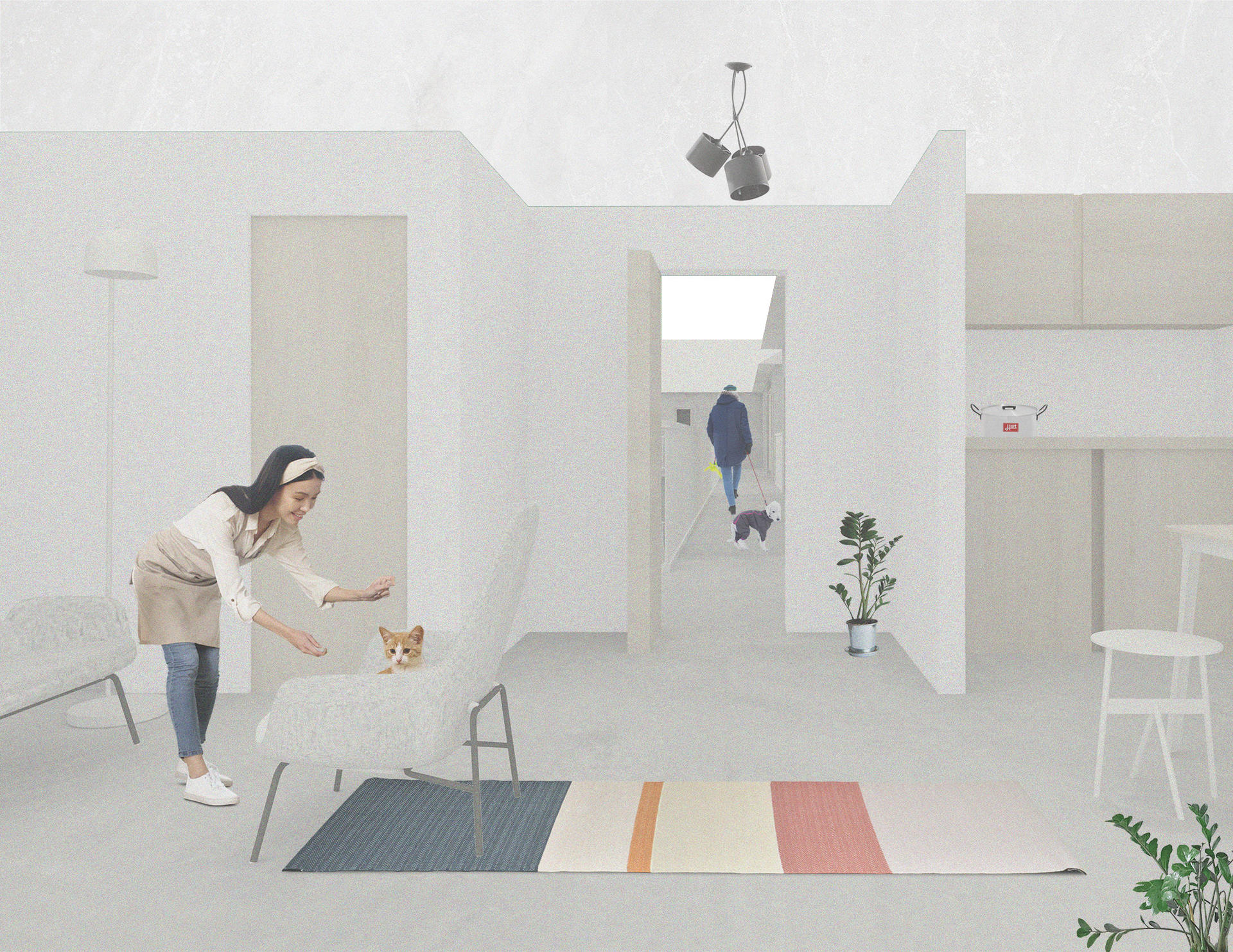
Image
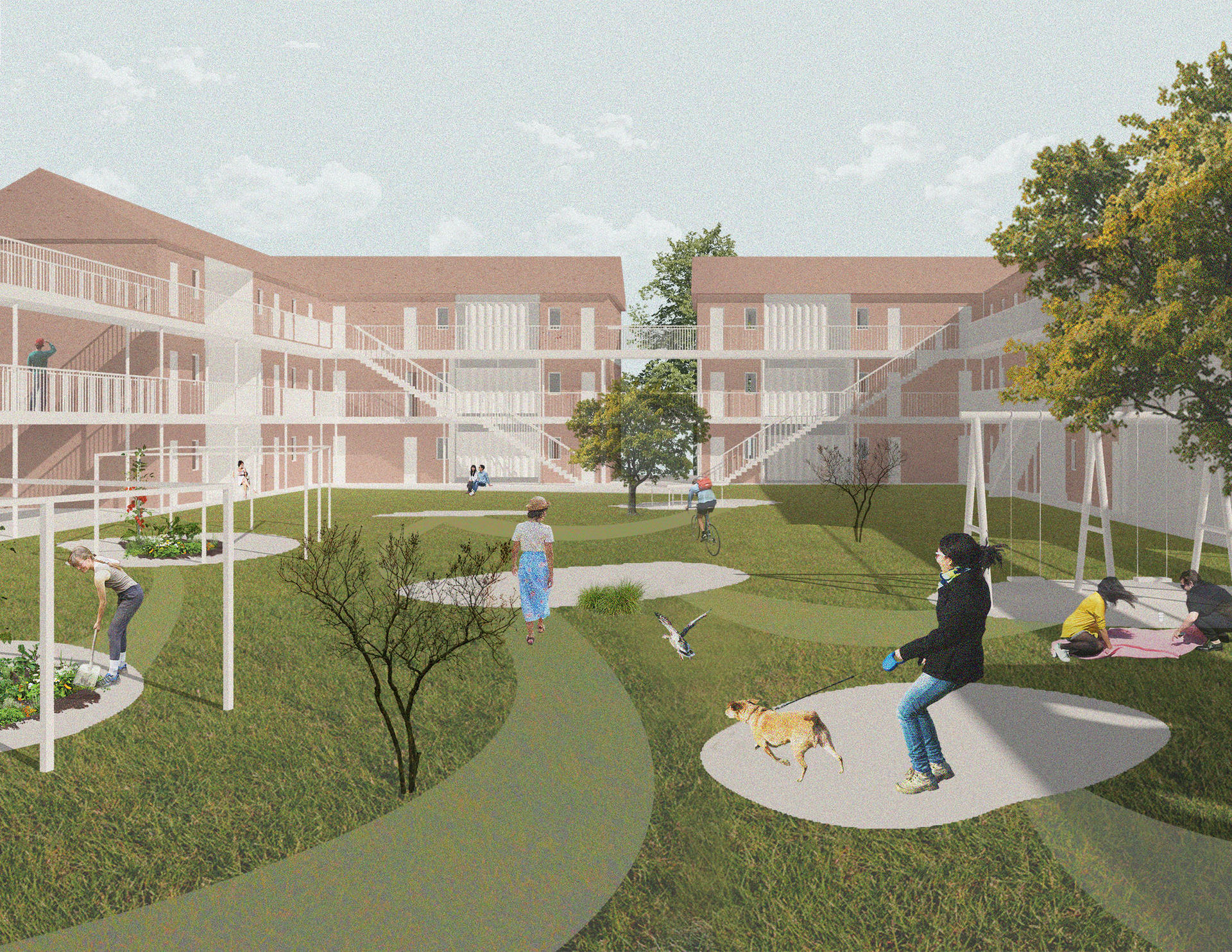
Image

ANNONTATED BIBILOGRAPHY
1. Zhen, Xuefeng. "Integrity of cultural heritage and methods of overall protection." Tongji University.
This book declares social founctional aspect as one of the aspects that affect integrity, which is less paid attention to in terms of cultural heritage renovation in China. Since Red Steel City is seen as both industrial and cultural heritage, this book takes it as an example to illustrate and offers insights on process and methods of renovation.
2. Huang, Yaqin. “Research on the Protection and Renewal Orientation of Old Workers’Community Under the View of Industrial Heritage.” Wuhan University of Technology, Urbanism and Architecture, 2019, pp. 21–24.
This book studies the case of Red Steel City as an example to propose the orientation of protection and renewal of industrial heritage, and offers ideas of spatial improvements.
3. Li, Hao. Eight Major Urban Planning——A Historical Study of Urban Planning in the Early Years of New China. China Construction Industry Press, 2016.
This book provides detailed information about the early city planning of Wuhan and how the expert from Soviet Union helped, which serves as a solid background as part of the research.
4. Li, Chen, Wang, Yin. “The Analysis and Value of the Community in Industrial Area in the Early Founding of P.R. China–Taking Community in Industrial Area in Wuhan Honggangcheng as an Example.” Wuhan University, Chinese and Overseas Architecture, 2012, pp. 70–72.
The original spatial characters this book talks about inspires to emphasis connection of each courtyard.
5. Cao, Weiheng. “Study on the Redesign of Neighborhood Space in the Eight and nine neighborhoods of 'Danwei Conpound' in Wuhan Red Steel City.” Hubei Institute of Fine Arts.
This book offers large information about existing layout, and alternative of the new poposed housing type based on Wuhan's development and policies.
ENDNOTES
- Yun Chen and others, “The First Five-Year Plan,” The first five-year plan, 1951.
- Its predecessor was Hanyang Iron Works, which was established in 1890, marking the start of China's modern steel industry.
- The editorial board of China steel yearbook, ed., 2019 China Steel Yearbook, 2019.
- Zhen, Xuefeng. "Integrity of cultural heritage and methods of overall protection." Tongji University.
- Li, Hao. Eight Major Urban Planning—A Historical Study of Urban Planning in the Early Years of New China. China Construction Industry Press, 2016.
- Huang, Yaqin. “Research on the Protection and Renewal Orientation of Old Workers’Community Under the View of Industrial Heritage.” Wuhan University of Technology, Urbanism and Architecture, 2019, pp. 21–24.
- TANG Wen, SONG Xiao-fei. Research on Soviet Architectural Design Pattern in Early Republic of China, Illustrated by the Case of Neighborhood 9 of Read Steel City Wuhan. School of Fine Arts, Central China Normal University, 2015.

